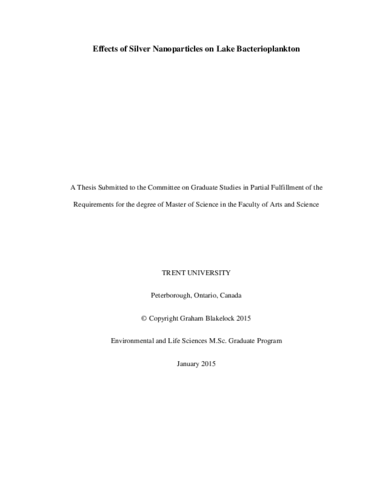Nanotechnology
Effects of Silver Nanoparticles on Lake Bacterioplankton
Silver nanoparticles (AgNP) released into aquatic environments could threaten natural bacterial communities and ecosystem services they provide. We examined natural lake bacterioplankton communities' responses to different exposures (pulse vs chronic) and types (citrate and PVP) of AgNPs at realistic environmental conditions using a mesocosm study at the Experimental Lakes Area. An in situ bioassay examined interactions between AgNPs and phosphorus loading. Bacterial communities exposed to high AgNP concentrations regardless of exposure or capping agent type accumulated silver. We observed increases in community production during additions of polyvinylpyrrolidone (PVP) -capped AgNPs and that site and nutrient-specific conditions are important to AgNPs toxicology in aquatic systems. Toxicological effects of AgNP are attenuated in natural conditions and differ from results from laboratory studies of AgNP toxicity. Our results demonstrate more studies are needed to fully assess the risk posed by these novel chemicals to the environment. This work could be useful in forming risk assessment policies which are largely based on lab studies and typically demonstrate strong toxic effects.
Author Keywords: bacterial production, bacterioplankton communities, ecological stoichiometry, Experimental Lakes Area, mesocosms, silver nanoparticles
